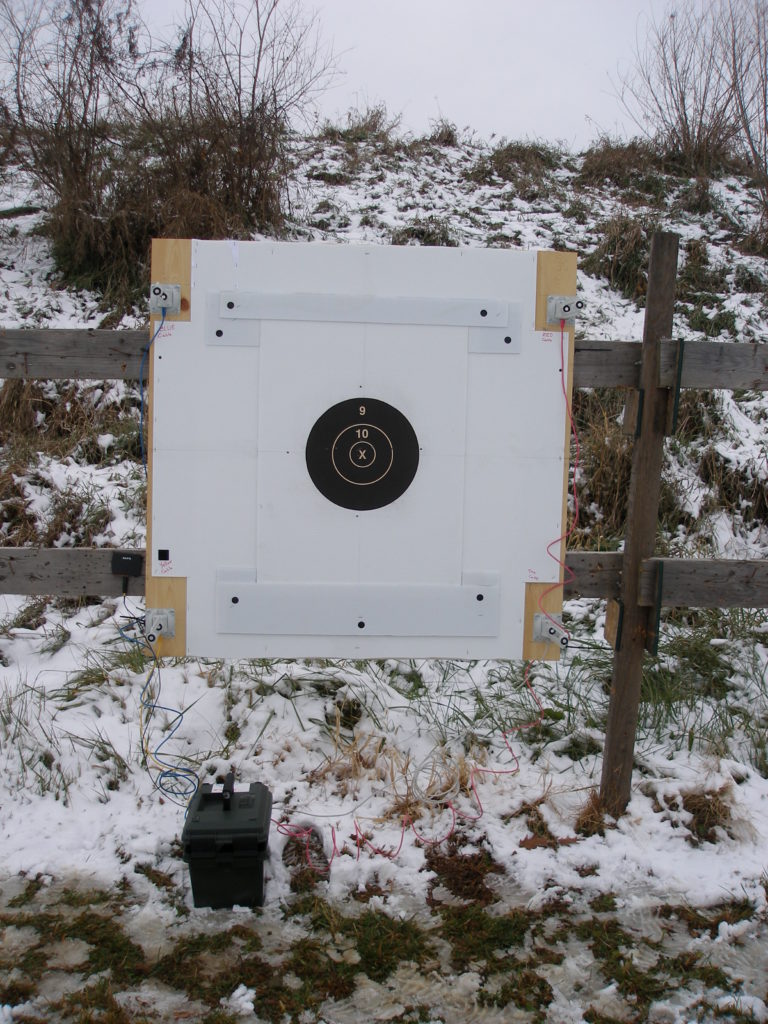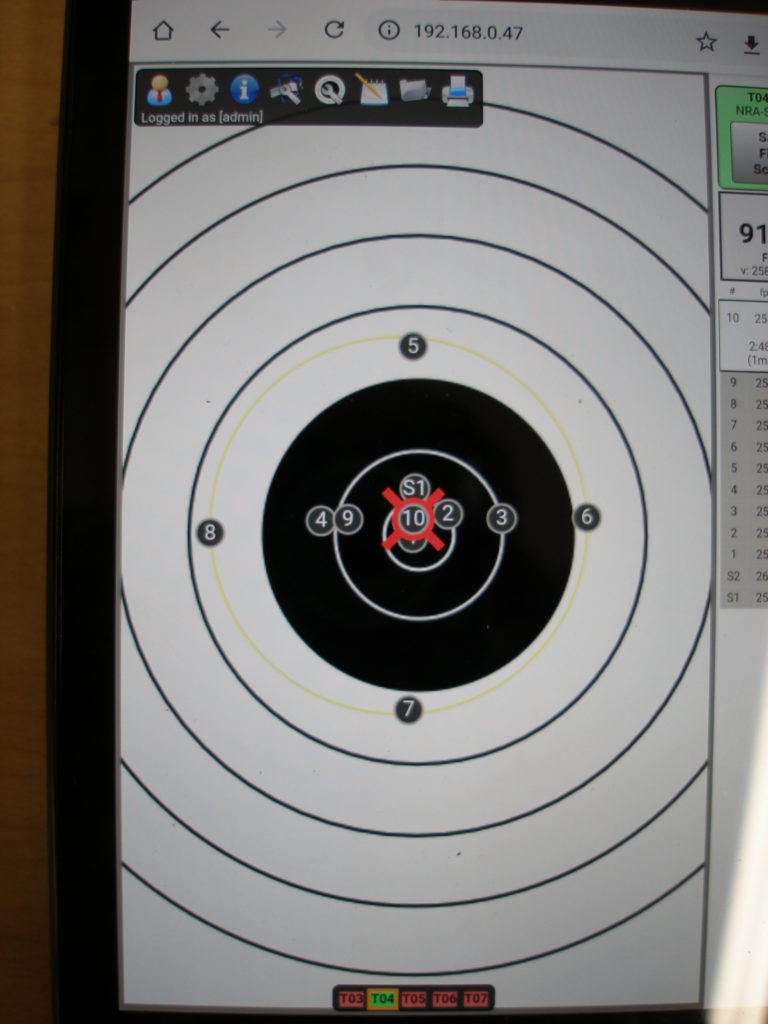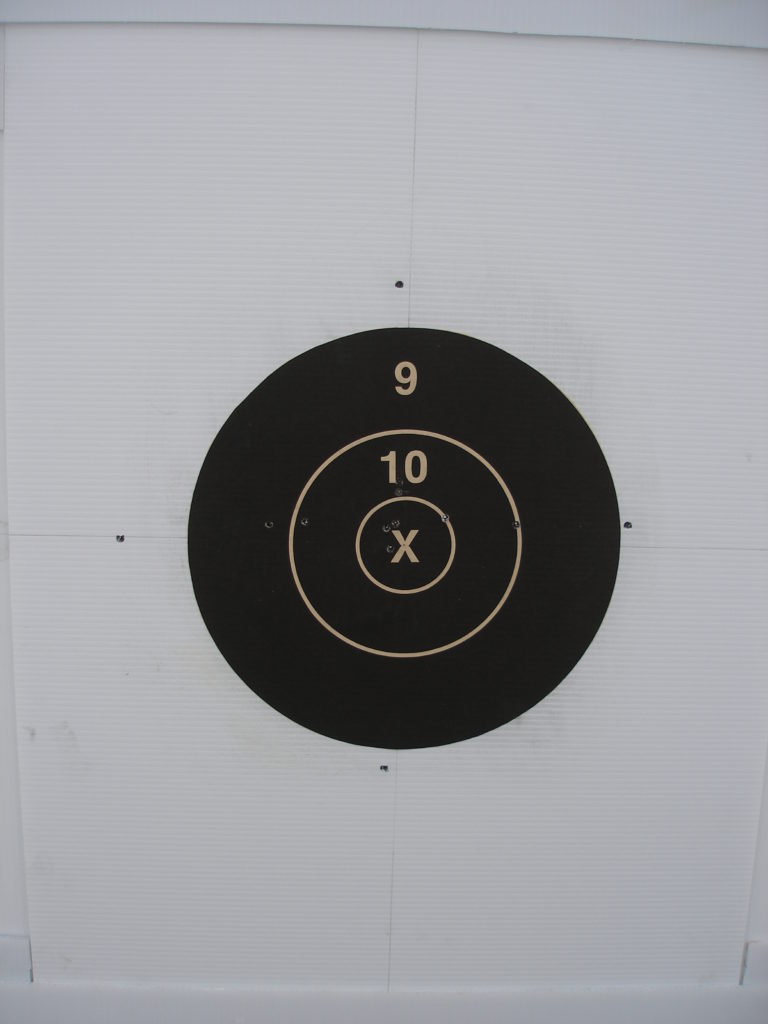A line from a movie says; “I love it when a plan comes together!” Well, today a plan came together. A week or so ago Mike Grannis and I went out to the range to set up the first electronic target and calibrate the target face to the frame. Well, it didn’t work out so well the first time and we went home with our tails between our legs to learn a bit more about the software.
I did some studying, set up a six-target system in the basement and played with things for a while. Dave Schnelle answered some questions and late last week I was ready to try again. Mike and I went out to the range this afternoon and started the process again. We set the target up at the 100-yard line and went through the setup and calibration process step-by-step.
We’re glad no one was around to watch the process. Having two retired engineers try to read a set of instructions on operating a computer system is, to say the least, interesting. Mike had his iPad, I had my Nexus 7 and we followed each other along as we tried to figure out the simple directions. It was an “Insert Tab A into Slot B while folding at Line C” procedure and each step was thoroughly debated before any buttons got pushed.
But, after a while we got things going and it was time to put a hole in the target to do the up-down, left-right correction. Mike got to do the honors and shot a 10, just out of the X at 11:30. The uncalibrated system showed it as a 9, just out of the 10 ring at 11:30. We went downrange and measured the vertical and horizontal offsets from the center of the X. We went back to the warm clubhouse, (thank you Mr. Sweeney) – made the conversion to millimeters and punched them into the system!
SON OF A GUN! The shot’s location on the two displays popped to exactly the position it had been on the target. We looked, compared and decided that it was time go for it. I put on my Range Officer Hat (really a warm fuzzy cap today) and called the shooter to the line. I set Mike up for 2 sighters and 10 shots for record on a 200-yard target.

Yes, it was that dark, dreary and sloppy!
Things worked just like we had hoped they would. The system marked the first two shots just where they were on the target and labeled them S1 and S2. The third shot was labeled as 1, and so on it went through shot 10. I had Mike shoot mid-ring shots, shots at 12, 3, 6 and 9 o’clock out in the white. He finished up with X-ring shots to close out the string. The system scored properly, every shot showed a velocity and there was a running calculation of velocity Standard Deviation as the string progressed.
My confidence in the system went up a lot on the third shot in the string. According to the system, Mike put a shot right on the 10-ring at about 2:30. When I took a look through the spotting ‘scope, there the hole was was, sitting on top of the 10 ring line right where it was supposed to be. (You can see the hole in the actual target and Shot 3 on the display)

Note location of shot 3 – right on the line

Compare Shot 3 on 10-ring line at 2:30 to TargetView Display
There is more testing to be done and I still have to learn more about the operations I need to do to run a line efficiently. But, we have demonstrated that we can build a stable target frame, can set up a system and have confidence that the system is telling us what is really happening downrange.
Many thanks to Mike Grannis for his advice, insight from his experience with his SMT system and sweat and chilling as we learn how to make this work.
Now we just need to build a bunch more!